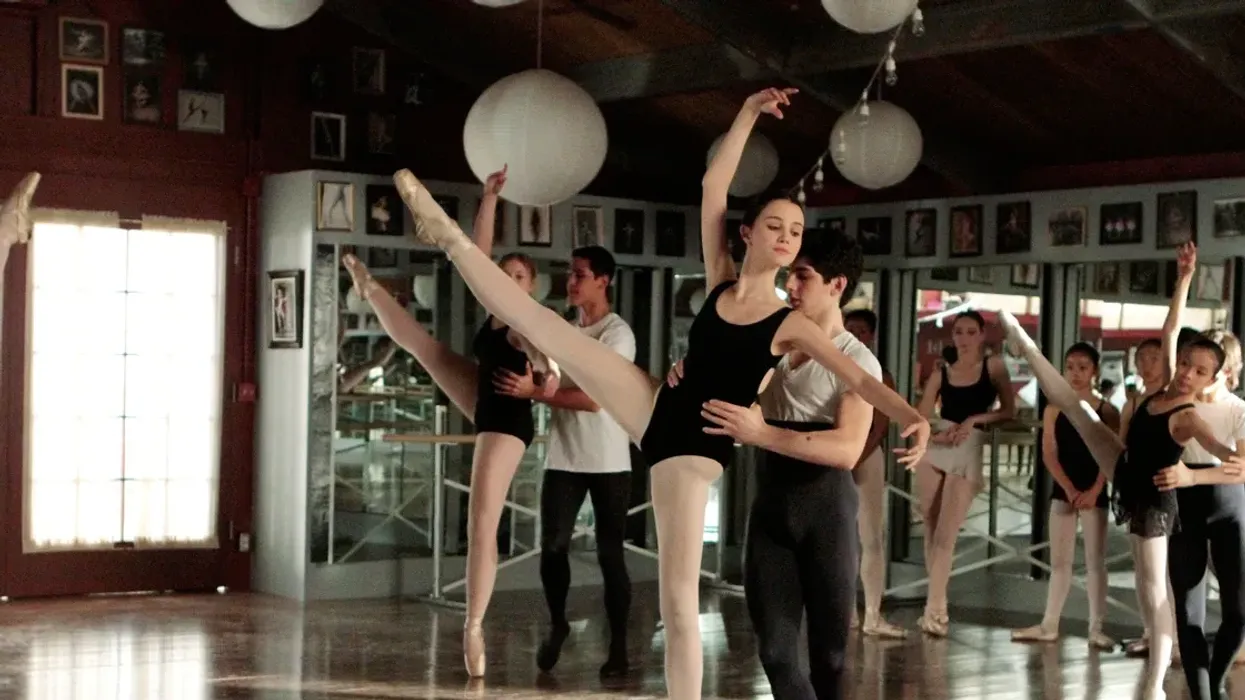How Do You Balance Dialogue and Action in Screenwriting?
It can be a delicate process, but one that always pays off in the end.

Bunheads
I sat down the other day to start a new spec and discovered that four out of my first five scenes had zero dialogue. This bumped me because it made me worried that an executive reading it may wonder if those first scenes matter. But in my mind, they did. I wanted to convey the loneliness of a character that has no one to talk to.
Eventually, I wound up adding dialogue from conversations around this person. To me, that struck the perfect mix of both, and made the first pages look more accessible to the reader.
After all that, I came back to the fact that the key ingredient is balance.
Today, I want to discuss that balance of dialogue and action with you.
Let's dive in.
What is the Role of Dialogue in Film and TV?

The Social Network
Sony
There's nothing I love more than snappy, speedy dialogue. I like a great script that sings on the page, with voices that flower in my imagination.
Let's look at a few reasons dialogue is so important in movies and TV:
- Reveals Character: Dialogue unveils personalities. Quirky word choices, sentence structure, or a catchphrase make a character memorable. Think of Juno's witty banter or Pulp Fiction's philosophical ramblings between hitmen.
- Advances Plot: Dialogue carries essential information, reveals plot twists, and raises the stakes. From courtroom exchanges to whispered conspiracies, what is said (or not said) propels the narrative.
- Establishes Relationships: The way characters speak to each other showcases their dynamics. Think of the affectionate bickering of an old married couple versus the awkward small talk on a first date.
- Pacing: Great dialogue helps pace a movie or TV show, setting the expectation for the audience with how scenes should move.
What is the Role of Action in Film and TV?

The Apartment
Criterion
I also love a movie or TV show where there's great action. I want to be on the edge of my seat, or laughing hard at hijinks, or just following a wandering character around a museum.
After all, the origins of film came from visuals and the silent era. You should be able to tell a story without words.
Let's look at a few reasons action is so important in movies and TV:
- Builds Tension and Excitement: Visceral action—car chases, explosions, daring escapes—amps up the adrenaline. Mad Max: Fury Road thrives on this kind of nonstop, visual intensity.
- Shows What Cannot be Said: A character's actions might betray their true feelings or intentions, even contradicting their words. Consider the silent determination of a hero preparing for battle, contrasting with their bravado.
- Conveys Themes Visually: Action is steeped in symbolism. A lone hero walking into the sunset, a ticking clock, a duel at dawn—visuals create motifs that deepen your story's message.
How Do You Balance Dialogue and Action in Screenwriting?

Police Story 2
YouTube
So, how do we achieve the balance of all these factors? There's no strict formula for the perfect dialogue-to-action ratio. Every story is unique.
However, always consider how you can use both tools to make your script more cinematic, engaging, and emotionally resonant.
- The "Show, Don't Tell" Principle: Whenever possible, try to communicate meaning through actions, expressions, and environments. Consider these alternatives to a character bluntly saying "I'm angry":
- Action: Slamming a door, throwing an object.
- Visual Cue: Clenched fists, a reddening face.
- Environment: A storm raging outside a window mirrors the character's inner turmoil.
- Active vs. Passive Description: Action lines in your script shouldn't just list events. Use vivid verbs and detailed imagery to engage the reader's imagination.
- Instead of: "Jo walks into the room."
- Try: "Jo strides into the room, her shoulders tense and a crease of worry between her brows."
- Subtext in Dialogue: The best dialogue is layered. What characters don't say can be as revealing as what they openly express. Pauses, subtle changes in tone, and evasive answers create tension and make dialogue feel real.
- Complement Each Other: Dialogue can reveal a character's thoughts while action shows the consequences, or vice-versa. Imagine:
- A character delivers a confident speech while their hands tremble.
- Scenes of negotiation interspersed with action shots of preparations being made in case talks fail.
- Know Your Genre: Certain genres naturally lean one way or the other:
- Action-heavy: Blockbusters like the John Wick franchise or The Fast and the Furious rely on high-octane sequences with minimal dialogue breaks.
- Dialogue-driven: Courtroom dramas and character-centric films like 12 Angry Men focus on tense conversations, while action primarily serves to set the stage or advance the plot.
While good dialogue is the backbone of a script, it's the interplay with action that makes it a cinematic experience. As a screenwriter, always ask yourself, "Can this be shown and not just said?"
Let me know what you think in the comments.
- Try This Helpful Scene Checklist for Your Screenplays ›
- How Do You Write a "Walk and Talk" in a Screenplay? ›
- 10 Tips for Writing Better Dialogue for Film and TV ›
- Use These 250 Strong Verbs to Supercharge Your Screenwriting | No Film School ›
- It's Time to Write Better Action Lines | No Film School ›
- A List of Strong Verbs for Writers | No Film School ›











